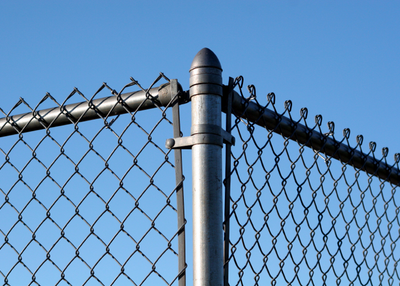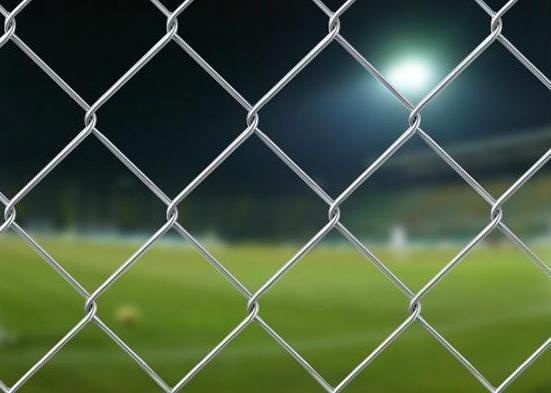
 A chain link fence, also known as a wire netting fence, is a common metal mesh structure used for fencing, enclosing spaces, and creating secure boundaries. Constructed from interwoven metal wires, this type of fence forms a series of diamond-shaped apertures, providing ventilation, visibility, and durability.
A chain link fence, also known as a wire netting fence, is a common metal mesh structure used for fencing, enclosing spaces, and creating secure boundaries. Constructed from interwoven metal wires, this type of fence forms a series of diamond-shaped apertures, providing ventilation, visibility, and durability.
Features:
1. Durability: Chain link fences are typically made from galvanized or plastic-coated metal wires, offering corrosion resistance and long-lasting properties suitable for various environments.
2. Visibility: Due to the structure of the mesh, chain link fences do not obstruct views, making them an ideal fencing option that maintains an open line of sight.
3. Easy Installation: Compared to other types of fences, chain link fences are relatively easy and quick to install, with the ability to adjust dimensions and height as needed.
4. Cost-Effective: Chain link fences are often a cost-effective choice compared to solid walls or other types of fencing, providing a relatively low-cost option for perimeter security.
5. Customizability: Chain link fences can be customized to fit specific requirements, including different heights, mesh sizes, and color options to meet the needs of various settings.
Uses:
Residential Fencing: Commonly used for residential fencing to provide security and privacy protection.
Industrial Parks: In industrial parks and commercial areas, chain link fences can be used for security fencing and boundary demarcation.
Sports Facilities: Used for fencing sports facilities such as soccer fields, basketball courts, and more.
Public Facilities: Utilized in parks, schools, and other public spaces for fencing purposes.
Agricultural Applications: Employed in farms and agricultural areas for fencing livestock or poultry.
In conclusion, chain link fences serve as a cost-effective, durable, and versatile fencing option widely used in various settings. Their straightforward installation process and transparent design make them a popular choice for fencing needs.
Fittings for a Chain Link Fence typically include various components that are essential for installing, securing, and enhancing the functionality of the chain link fence.
 Here are some common fittings for a chain link fence:
Here are some common fittings for a chain link fence:
1. Line Posts: These are vertical posts set at regular intervals along the fence line to support the chain link fabric.
2. Terminal Posts: These are used at the ends and corners of the fence to provide stability and support for the chain link fabric.
3. Top Rail: This is a horizontal pipe that runs along the top of the fence to provide additional support and rigidity.
4. Tension Bands: These are used to attach the chain link fabric to the terminal posts and provide tension to keep the fence tight.
5. Tie Wires: These wires are used to secure the chain link fabric to the line posts and top rail.
6. Fence Gates: These are used as entry and exit points in the chain link fence and typically include gate frames, hinges, latches, and locks.
7. Post Caps: These are placed on top of the posts to protect them from the elements and provide a finished look.
8. Tension Bars: These are used to help maintain the tension in the chain link fabric along the length of the fence.
9. Barbed Wire Arms: These are attachments that can be added to the top of the fence for security purposes.
10. Gate Hardware: Includes hinges, latches, and other hardware specifically designed for chain link fence gates.
These fittings are crucial for the installation, strength, and functionality of a chain link fence. Depending on the specific requirements of the fence and the installation site, additional fittings and accessories may be needed.